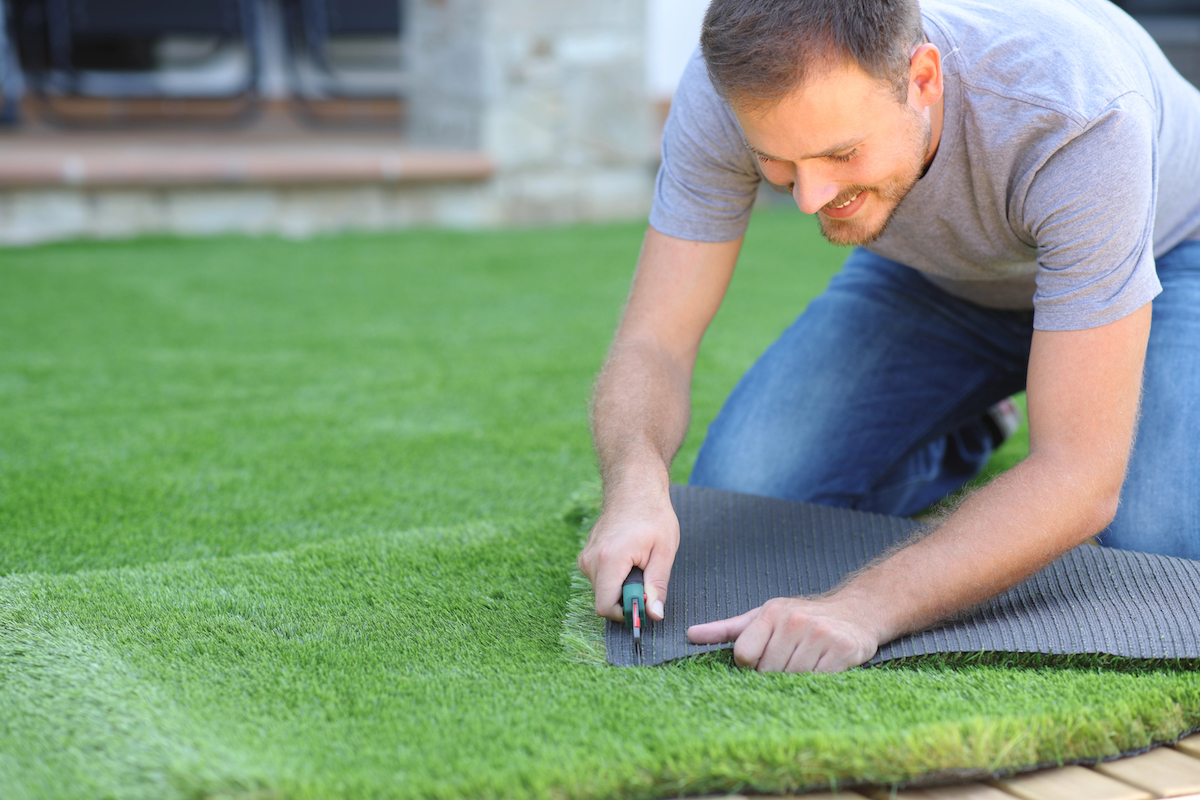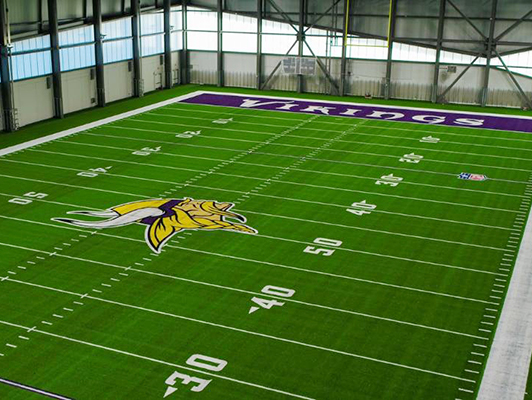Enjoy a Flawless Lawn with Arizona Artificial Turf for Any Outdoor Space
Enjoy a Flawless Lawn with Arizona Artificial Turf for Any Outdoor Space
Blog Article
See Why Homeowners Prefer Synthetic Grass for Sustainable Landscape Design Practices
As property owners increasingly prioritize sustainability in landscaping, synthetic grass has arised as a compelling alternative to standard yard. Its capability to save water, reduce maintenance initiatives, and lessen environmental effect settings it as a useful choice for those seeking eco-friendly options. The visual charm and versatility of fabricated grass provide to varied layout choices. However, the implications of this change expand beyond mere convenience and visual appeals, prompting a closer examination of exactly how these choices influence wider environmental outcomes. What remains to be checked out is the full scope of advantages that man-made grass can supply to home owners and the environment alike.
Water Preservation Benefits
One of one of the most substantial benefits of synthetic grass is its function in water preservation. Standard grass lawns call for significant quantities of water to maintain their lush appearance, typically leading to overuse of local water resources, particularly in arid regions. On the other hand, synthetic grass eliminates this demand totally, as it does not require watering. This not only saves water however additionally decreases the strain on community water supply, specifically during drought conditions.
Additionally, the installation of synthetic grass can add to a much more sustainable landscape. House owners can substantially lower their water costs, permitting for reallocation of sources to other ecological efforts or house uses. Furthermore, synthetic turf is designed to withstand different climatic problems without the requirement for extra watering, making it a suitable choice for areas facing water shortage.
The environmental advantages expand past instant water savings. By reducing water consumption, synthetic grass aids to mitigate the influences of environment adjustment, protecting important ecosystems that are threatened by excessive water extraction. As lasting landscape design practices gain traction, fabricated grass emerges as a liable selection for house owners looking for to develop environment-friendly outside spaces.
Lowered Upkeep Efforts
Synthetic grass significantly minimizes maintenance efforts contrasted to typical lawn yards. With synthetic yard, house owners can remove the time-consuming jobs connected with natural landscaping, such as mowing, feeding, and weeding. This not only conserves important time but additionally decreases physical labor, making lawn treatment available for people of all ages.
One of the most noteworthy benefits is the absence of normal mowing. Conventional grass call for constant cutting to preserve a visually pleasing height, whereas artificial grass continues to be constantly lush without the need for cutting. Additionally, homeowners no much longer need to use fertilizers or pesticides, which are frequently needed to maintain all-natural grass healthy and balanced. This change not only lightens the workload but also promotes a neater, much more consistent appearance year-round.
In addition, synthetic grass is durable and durable, requiring very little maintenance past occasional brushing and rinsing to remove debris. This convenience of upkeep permits property owners to enjoy their outside rooms without the constant concern of maintenance, offering even more time for recreation and household activities. Inevitably, the minimized upkeep efforts linked with synthetic grass make it an appealing choice for those seeking a low-maintenance, aesthetically appealing landscape.

Ecological Effect Reduction
There is an expanding acknowledgment of the ecological benefits related to synthetic grass, particularly in terms of water conservation and lowered chemical usage. Typical lawns need considerable quantities of water, specifically in drought-prone regions, bring about raised stress on local water resources. In contrast, synthetic grass eliminates the requirement for watering, dramatically decreasing water intake and advertising sustainability.
In addition, conventional lawn maintenance typically includes the application of herbicides, chemicals, and plant foods, which can add to soil and water pollution. Artificial grass minimizes this ecological danger by requiring very little upkeep and essentially removing the demand for harmful chemicals. This not just improves soil health yet additionally protects neighborhood ecological communities from hazardous overflow.
Additionally, the manufacturing of natural lawn yards usually includes the usage of fossil fuels for cutting and landscape design devices, more adding to greenhouse gas emissions. By picking man-made lawn, house owners can considerably lower their carbon impact read related to yard treatment tasks.
Visual Charm and Versatility
Along with its environmental benefits, synthetic grass supplies substantial aesthetic allure and adaptability for landscaping. Home owners can attain a lavish, environment-friendly appearance year-round, getting rid of the seasonal variations frequently connected with natural yard. This constant aesthetic not only improves the aesthetic charm of a residential or commercial property however additionally contributes to a sleek and well-maintained appearance.
Furthermore, synthetic grass is offered in a selection of designs, colors, and textures, enabling customization to suit individual choices and design motifs - Arizona turf. Whether used in property gardens, business spaces, or recreational locations, it can effortlessly integrate right into varied landscape design layouts, from modern-day minimal to lavish exotic setups
The flexibility of man-made grass prolongs beyond simple appearance; it can be mounted in numerous places, consisting of roofs, patios, and also indoor Read Full Article spaces, producing possibilities for distinct landscape design remedies. Additionally, it is suitable for an array of tasks, from children's backyard to pet-friendly settings, providing functionality without jeopardizing design.
Inevitably, the aesthetic charm and flexibility of synthetic grass make it an appealing option for property owners looking for lasting landscape design remedies that do not sacrifice beauty for ecological obligation.

Long-Term Price Savings
One of the most engaging advantages of synthetic grass is its capacity for long-term cost financial savings. Unlike all-natural turf, which needs regular upkeep-- consisting of mowing, watering, feeding, and bug control-- synthetic grass significantly minimizes these recurring expenses. House owners can conserve a considerable quantity on water expenses, especially in regions where water shortage is a pressing issue. The removal of grass care solutions additionally adds to economic savings, as there is no need for customized devices or labor.
Additionally, synthetic turf has a lifespan of 15 to 25 years, depending upon its high quality and use. This resilience reduces replacement costs, making it a much more cost-effective option in the long run. Moreover, the initial investment in synthetic grass can typically be recovered through the financial savings accumulated gradually.
While the ahead of time cost might appear higher contrasted to sod installment, the advancing financial savings from reduced maintenance and water usage typically outweigh these first expenditures. Inevitably, the adoption of synthetic grass not just advertises a sustainable landscape design remedy but likewise uses home owners a financially savvy choice that straightens with long-term budgeting objectives.
Conclusion
Synthetic lawn emerges as a compelling alternative for sustainable landscape design, providing considerable advantages in water preservation, minimized upkeep efforts, and diminished environmental influence. As neighborhoods increasingly prioritize eco friendly methods, the adoption of artificial turf represents a progressive step toward achieving lasting and resistant landscapes.
In additional info addition, artificial lawn is made to withstand different climatic conditions without the demand for supplemental watering, making it a suitable choice for regions facing water shortage. (Turf installation phoenix az)

Man-made turf arises as an engaging alternative for sustainable landscaping, offering substantial benefits in water preservation, decreased maintenance initiatives, and lessened environmental impact.
Report this page